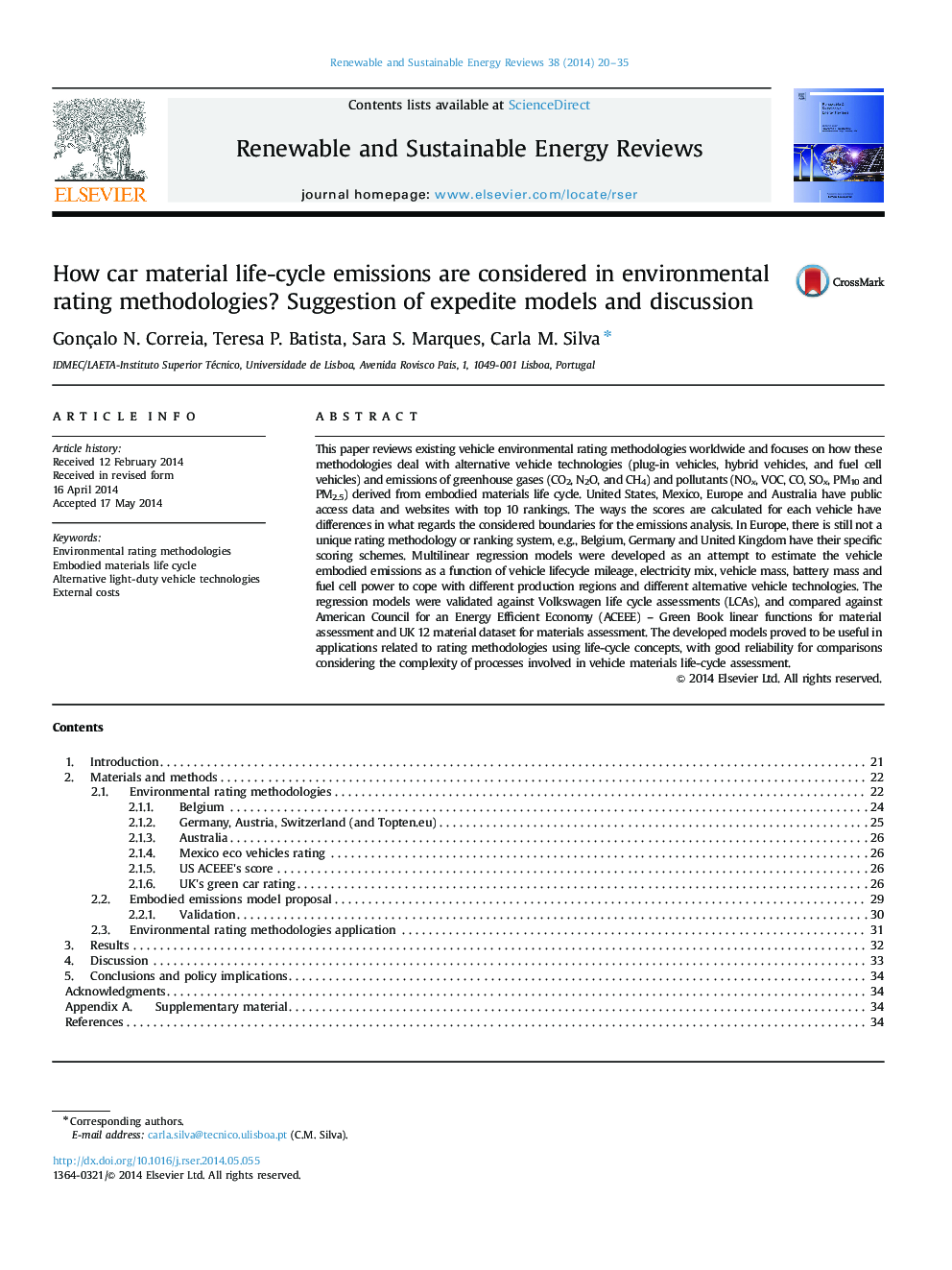| Article ID | Journal | Published Year | Pages | File Type |
|---|---|---|---|---|
| 8119370 | Renewable and Sustainable Energy Reviews | 2014 | 16 Pages |
Abstract
This paper reviews existing vehicle environmental rating methodologies worldwide and focuses on how these methodologies deal with alternative vehicle technologies (plug-in vehicles, hybrid vehicles, and fuel cell vehicles) and emissions of greenhouse gases (CO2, N2O, and CH4) and pollutants (NOx, VOC, CO, SOx, PM10 and PM2.5) derived from embodied materials life cycle. United States, Mexico, Europe and Australia have public access data and websites with top 10 rankings. The ways the scores are calculated for each vehicle have differences in what regards the considered boundaries for the emissions analysis. In Europe, there is still not a unique rating methodology or ranking system, e.g., Belgium, Germany and United Kingdom have their specific scoring schemes. Multilinear regression models were developed as an attempt to estimate the vehicle embodied emissions as a function of vehicle lifecycle mileage, electricity mix, vehicle mass, battery mass and fuel cell power to cope with different production regions and different alternative vehicle technologies. The regression models were validated against Volkswagen life cycle assessments (LCAs), and compared against American Council for an Energy Efficient Economy (ACEEE) - Green Book linear functions for material assessment and UK 12 material dataset for materials assessment. The developed models proved to be useful in applications related to rating methodologies using life-cycle concepts, with good reliability for comparisons considering the complexity of processes involved in vehicle materials life-cycle assessment.
Keywords
Related Topics
Physical Sciences and Engineering
Energy
Renewable Energy, Sustainability and the Environment
Authors
Gonçalo N. Correia, Teresa P. Batista, Sara S. Marques, Carla M. Silva,
